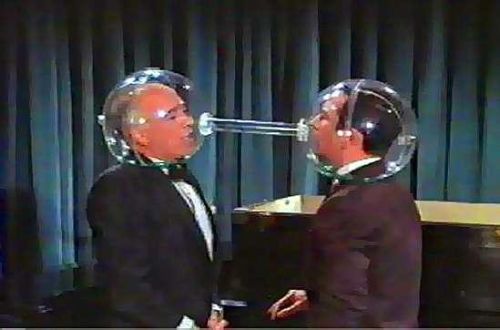
The cone of silence lowered by the RBA, Government and Opposition – none of which seems able to contemplate solutions – has taken a couple of blows today. The AFR headlines with a story from several sources:
The dollar strengthened on Wednesday to $US1.05 and ¥104.7, a five-year high against the yen which is being driven down by the Bank of Japan’s move to pump ¥7 trillion a month into its stalled economy.
The Reserve Bank of Australia’s trade-weighted index rose to 79.9, the highest level since 1985, just before a global slump in commodity prices sent the dollar plunging.
The story runs on with a warning from Terry Davis, managing director of Coca-Cola Amatil:
…the strong dollar “was decimating” domestic manufacturers facing strong competition from imports.
The strong dollar was more troubling than high penalty rates, Mr Davis told Bloomberg’s summit, and forecast more local manufacturing industries could go the way of the textile and footwear industries and disappear.
“A lot has been made about Australia’s high cost base but it’s a high cost base relative to what a US dollar was, and what the euro was and what the pound was,” he said, adding that reducing penalty rates or bringing in more workers would not change the negative impact from the currency.
MB has made this point repeatedly and it is disturbing that it is has taken this long for someone in the MSM to repeat it. Bring it on Mr Davis. It’s good to see as well the word “decimated” applied to manufacturing with capex levels running at the same nominal levels as the late 1980s. Not waving, drowning.
Paul Howes, national secretary of the Australian Workers’ Union, then picks up the baton:
“The structural shift that the economy has gone through in the last five years is different to that shift which occurred with the lowering of tariff barriers in the 1980s. We knew what was going to occur to the textile industry, there was a plan for what would happen to the textile industry, there was an understanding of what the reduction in tariffs would mean.
Not quite true. There’s a plan. It’s just managed by the RBA this time around, not the government. It is simple enough. Go through a process of export substitution preferring low value-added exports (dirt) for high value-added (manufactures) and leverage the proceeds into a property bubble that the central bank clearly feels it can control. The hidden assumption (or fatal flaw) of the plan is that prices for our dirt will remain high forever.
The “decimation” of manufacturing has at last reached the ears of one pollie, Nick Xenophon, who is now proposing an urgent senate inquiry. From News:
“It is now situation-critical,” Senator Xenophon said. “The Australian Bureau of Statistics estimates over 140,000 Australian manufacturing jobs have been lost in the last five years – the high Australian dollar must be a significant factor.
“The export-killing effects of the high dollar also have a huge impact on agriculture, especially in the Riverland, reflected in job losses and falling farming incomes.
“The major parties need to get their heads out of the sand and grapple with the impact of the high dollar as a key and urgent policy issue.”
Senator Xenophon said the Government could adopt the Swiss and Japanese approaches by directly intervening to bring down the value of the currency, or put in place strategies to adapt to changing values of the currency which impact on exporters and importers.
“The problem with doing nothing is large portions of manufacturing will turn into an industrial wasteland,” he said. “Once they shut their doors it’s likely they’ll be lost forever.
“The dollar will eventually come down – the problem is if factories close down and farmers walk off the land, there’ll be no capacity to capitalise on that.”
The government can’t do that I’m afraid Senator, not unless it’s prepared to trash the independence of the central bank, which could do what Switzerland and/or Japan has done (but should probably do neither). Ideal would be the RBA and APRA getting together on macroprudential rules to break the link between interest rates, credit and the dollar. But that’s probably not going to be possible without government help, not least because someone will have to do something about the LMIs.
Second best would be the eminently sensible Warwick McKibbin approach of printing money for foreign central banks, which he reiterated yesterday. What the government could do to support that relatively easily is install new taxes on capital flows.
There is more but I doubt very much that the good Senator has the stomach for it: cut housing subsidies, reform the MRRT, install an SWF and crash interest rates.
Of course, none of it will happen. The cone of silence will fall once more and we will await our fate. As the good Senator says, the lower dollar will come and a lot sooner than the end of the decade, but it will come with crisis.

